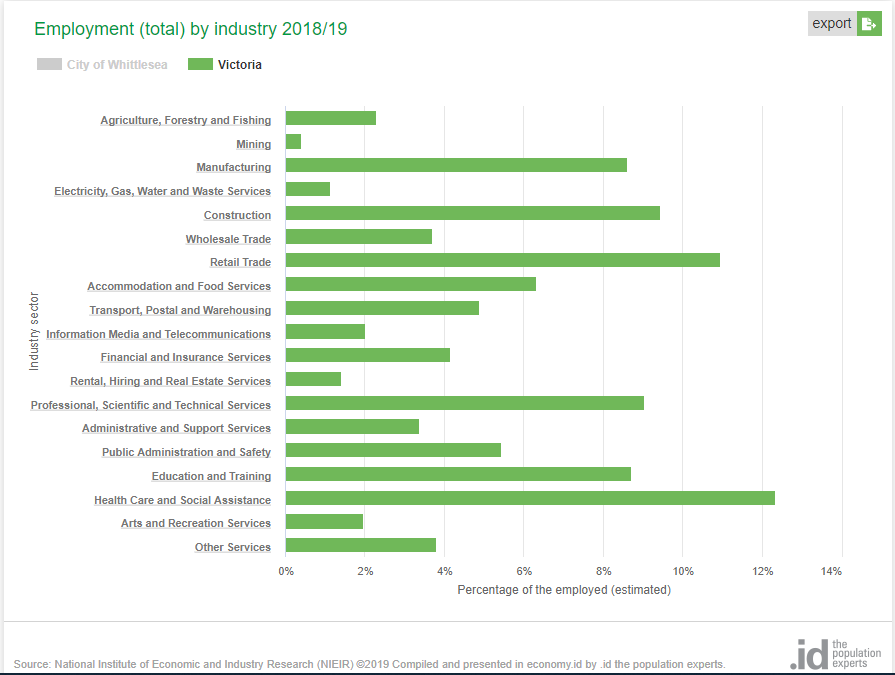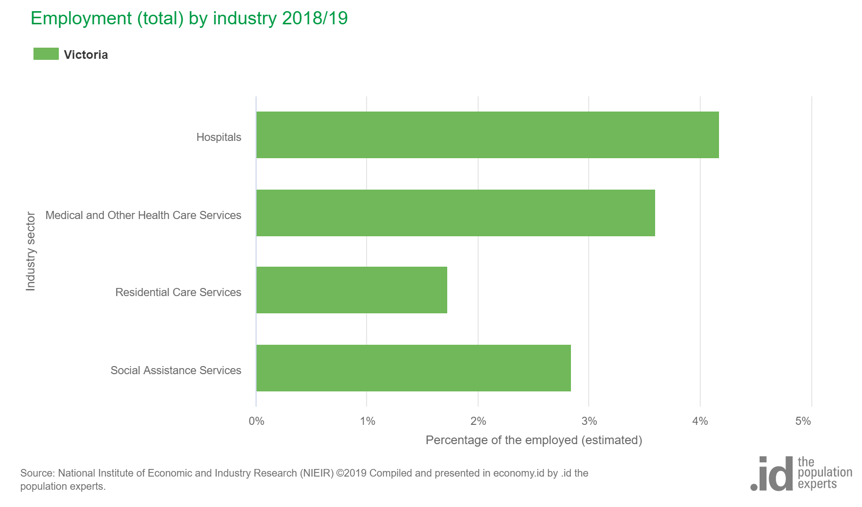For those who can still bear to follow the news, you might have heard about the increasing number of healthcare workers contracting COVID-19. On the surface, this may seem a sad inevitability given their close physical proximity to so many people with the disease. Yet, you may wonder why we’re not also seeing high numbers of hairdressers and other workers who need to be close to people to do their job (and were doing so in Victoria, right up until level four restrictions were imposed). Glenn offers one answer – and it’s nothing to do with PPE.
In Australia’s terrible second wave of COVID-19, and Lockdown 2.0 in Victoria, there has been a lot of discussion of the horrible toll the coronavirus takes when it sweeps through our aged care sector, and the risks to health-care workers on the front line. I don’t want to take anything away from the role of these essential workers in the pandemic, but a few things piqued my interest in this.
The Victorian Department of Health and Human Services (DHHS) publishes an update on the virus each day, which now includes the number of health-care workers infected. In the update for 12th August, that was 1,967, in total since the start of the pandemic. Victoria’s CMO, however, was quoted yesterday as saying that the majority of health care workers were actually infected in the community, not through their health care settings. If that was the case, you wouldn’t expect higher numbers among health care workers than any other occupation.
What do the numbers show?
Well, at 12 August 2020, there have been 15,646 cases of COVID-19 in Victoria since the beginning of the pandemic. 1,967 of those have been health care workers.
That’s 12.5% of all cases.
Since 2001, Health Care and Social Assistance has been Australia’s fastest-growing industry, by a large margin.
It has been Australia’s largest industry in terms of total employment since 2011, when it overtook Retail Trade and Manufacturing. In the 2016 Census, over 1.35 million Australians, and 342,000 Victorians were employed in Health Care and Social Assistance.
According to the National Economics modelling which appears in our economic profiles, and provides up-to-date jobs numbers, as well as modelling for the economic impacts of COVID-19, in 2018-19 this number had risen to 410,000 in Victoria, and 1.6 million in Australia. It’s been an absolute boom sector.

And the percentage of all workers?
In Victoria, it’s 12.3% (slightly higher Australia-wide)
So the proportion of Health Care workers having COVID-19 in Victoria is almost identical to the percentage of the workforce made up by Health Care and Social Assistance. To put it another way – if the virus affected everyone equally, that’s about the number of health care workers you’d expect to be infected, just based on the size of the industry in the community. It is frightening to think that nearly 2,000 health-care workers have had the virus – and it does create issues in terms of requirements to isolate, meaning that health-care workers are not available to do their important work – but it’s still less than 2% of all workers in this sector in Victoria.
As I said, this is not saying that working in the health field at this time isn’t dangerous, or that workers in the sector aren’t doing a great job!
A few caveats
DHHS classifications
The industry division for these workers is Health care and social assistance (that’s one of 19 standard divisions in the ANZSIC classification). It’s not clear whether the DHHS numbers include only those workers in frontline health care settings, or people working across the whole sector including social assistance.
Here is the breakup of industry subcategories in Victoria for 2018-19.

The DHHS numbers almost certainly include the Hospitals and Residential Care Services (which includes Aged Care and has been one of the key issues during the pandemic), but they may not include all of the workers in the Social Assistance Services category, which includes child care, social work etc. If these aren’t included, the total to base the population on from would be lower – Health Care excluding social assistance only makes up around 9.5% of workers.
Health care workers as a proportion of the workforce
While the proportion of cases in health care workers is close to the proportion of health care workers among all workers, it’s not the same as the proportion of health-care workers in the community. In Victoria, the workforce participation rate is around 60% – so 40% of people over the age of 15 are not working or looking for work. But the number of coronavirus cases is obviously measured against the whole community, regardless of employment status.
Looking at it that way, Health Care workers make up around 7.1% of all people in Victoria over the age of 15. So an infection rate of 12.5% does indeed make up a higher proportion of the population. Nearly twice as much in fact.
No data about infections of workers in other industries
What this doesn’t show is what the rate is among workers generally, or for other industries. The DHHS doesn’t publish this for any industry but Health Care – so we can’t see whether workers in general are more likely to catch the virus, or whether specific industries are more likely than others, not just Health Care.
There have certainly been some highly publicised outbreaks in meatworks (food manufacturing), distribution centres (transport, postal and warehousing) and schools (Education), as well as in the residents of aged care facilities, who will not be employed. You would expect that industries which can mainly work at home, such as Professional, Scientific and Technical Services would have a lower rate. But the numbers by industry are not published, so we can only conjecture at the moment.
So are Health Care workers more likely to catch COVID-19 in Victoria?
Uncertain – they certainly appear more likely to get it than the community overall, but we can’t tell whether their infection rate is proportional to the rate in the entire workforce relative to the community in general. Either way, it’s important context to consider that, Australia-wide, there are 54,000 hairdressers and 496,000 Health Professionals (a category including doctors, nurses and allied health – not even include all health workers). So even given even rates of infection between health workers and hairdressers, you would expect to see ten times as many health professional infected, simply due to greater numbers.
While total numbers are always interesting, rates and percentages usually provide better insights. Though Victoria is seen as a Covid-19 hotspot, it’s still less than a third of one percent of the population who have been diagnosed with the virus.
Find industry data (and more) for your local area
Understanding the industry and employment story of your local area is critically important in social planning and economic development. As I mentioend above, our economic profiles provide annually updated jobs numbers, worker characteristics and journey-to-work data, with detailed industry breakdowns and change over time for hundreds of local government areas across Australia. Our community profiles have information about the residents industry, occupation and method of travel to work at the suburb/district level, as well as more social indicators like JobSeeker numbers and workforce disengagement.











